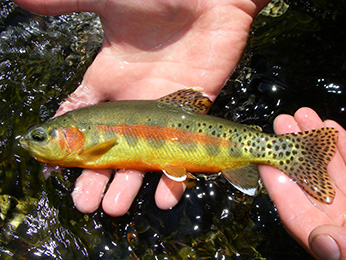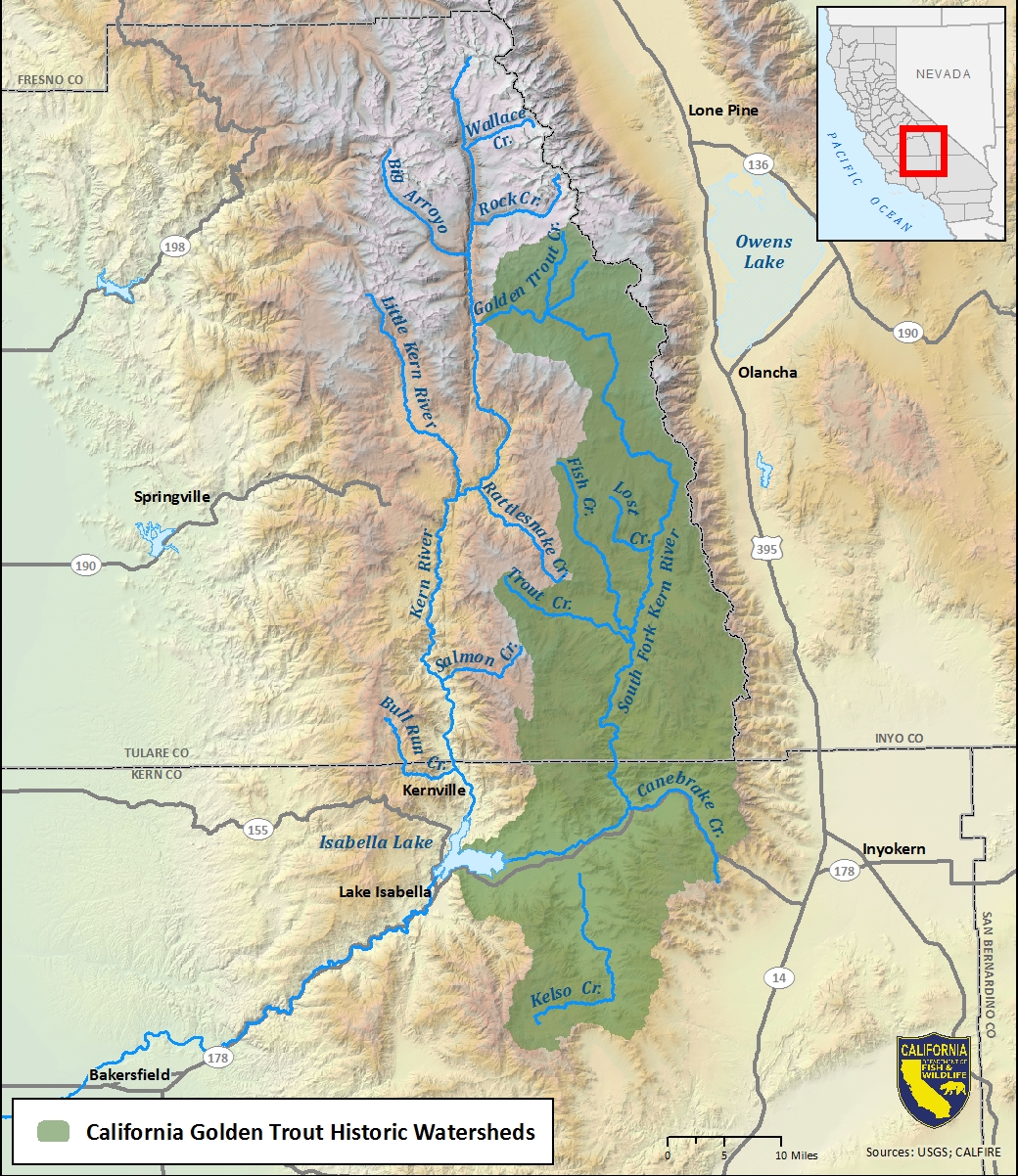Identification
 California golden trout.
California golden trout.
 California golden trout.
California golden trout.
- Widely regarded as one of the most beautiful trout in the world. It is the State Freshwater Fish of California and has long been recognized for its unparalleled beauty.
- Coloration is spectacularly bright: the belly, opercula, lower jaws, and lateral line are a vivid red to red-orange.
- The back is a deep olive-green, fading to bright gold on the sides of the fish.
- About ten parr marks are centered on the lateral line and are usually present through adulthood.
- Body spots are large, round, dark, and concentrated near the caudal peduncle and on the dorsal and caudal fins.
- Spots are not usually present below the lateral line.
- Paired fins are orange, and some have white or yellow tips preceded by a black band.
- Dorsal fin also with a white to orange tip.
Distribution
- Native to two stream systems on the eastern side of the Kern River: Golden Trout Creek and the South Fork Kern River (Tulare County).
- They were stocked extensively outside their native range into numerous high-elevation lakes and streams throughout the Sierra Nevada Mountains.
 Big Whitney Meadow from Cottonwood Pass.
Big Whitney Meadow from Cottonwood Pass.
 (click to enlarge)
(click to enlarge)
Angling Information
Golden Trout Creek is a designated Heritage and Wild Trout Water.
The South Fork Kern River is a designated Wild Trout Water.
 Golden Trout Creek.
Golden Trout Creek.
 South Fork Kern River.
South Fork Kern River.
All waters on the Kern Plateau are open to angling, although many are accessible only by trail since both watersheds are largely encompassed within the Golden Trout Wilderness.
Some areas of the South Fork Kern River are adjacent to forest roads, particularly in the lower portion of the watershed near Kennedy, Troy and Monache meadows. These populations are more likely to contain hybridized fish that may not exhibit the bright coloration of fish in the upper watershed.
Most of the creeks within Golden Trout Wilderness abound with California golden trout and they are known to readily take flies of all types, particularly dries and terrestrials.
Small lures may also be effective but casting in the smaller tributaries, often lined with riparian or meadow vegetation, can be difficult.